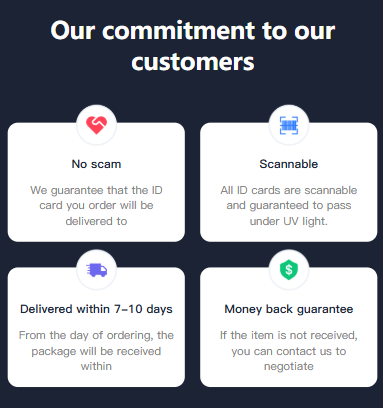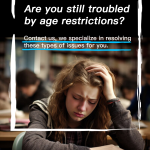The Real ID is an important form of identification in the United States. It is designed to enhance security and meet specific federal requirements for accessing certain federal facilities, boarding commercial flights, and other situations where a higher – level of identification verification is needed. For military – discharged individuals, the process of applying for a Real ID has its own set of considerations and steps.
Understanding the Real ID Requirements
Before starting the application process, it is crucial to understand what the Real ID entails. A Real ID – compliant driver’s license or identification card has a star in the upper – right corner (in most states). This indicates that it meets the enhanced security standards set by the Real ID Act. These standards include stricter proof – of – identity and proof – of – residency requirements compared to a regular driver’s license or ID card.
The Real ID Act was enacted in response to the 9/11 Commission’s recommendations to improve the security of identification documents. It aims to prevent fraud and ensure that individuals presenting identification are who they claim to be.

Required Documents for Military – Discharged Individuals
When applying for a Real ID as a military – discharged individual, specific documents are needed to prove identity, residency, and legal presence in the United States.
- Proof of Identity: A valid U.S. passport, a certified copy of a birth certificate, or a Department of Defense (DoD) identification card can be used as proof of identity. For military – discharged individuals, the DD Form 214 (Certificate of Release or Discharge from Active Duty) is also an important document that can be presented to establish identity and military service status.
- Proof of Residency: Documents such as utility bills (electricity, water, gas), bank statements, or lease agreements can serve as proof of residency. The document should be dated within the last 90 days and have the applicant’s name and current address on it.
- Social Security Number (SSN) Verification: A Social Security card or other documents that verify the SSN, such as a W – 2 form or a pay stub with the full SSN, may be required. This helps to ensure that the applicant is properly identified and associated with the correct Social Security record.
The Application Process
The first step in applying for a Real ID is to find a local Department of Motor Vehicles (DMV) office that accepts Real ID applications. It is advisable to check the DMV’s official website in advance to make sure you have all the required documents and to schedule an appointment if possible. Some DMV offices may have long wait times, and scheduling an appointment can save you time.
Once at the DMV office, you will need to fill out an application form. This form will ask for basic personal information such as your name, date of birth, address, and contact information. Make sure to fill out the form accurately and legibly.
After submitting the application form, you will be required to present the original documents (not photocopies) as proof of identity, residency, and SSN. The DMV staff will verify these documents and may make copies for their records. They will also take your photograph and collect any applicable fees for the Real ID application. The fee amount can vary depending on the state and the type of identification (driver’s license or ID card) you are applying for.

Once the application is processed and approved, you will be issued a temporary Real ID – compliant document if you need immediate use. The permanent Real ID will be mailed to the address you provided on the application form within a few weeks.
Common Problems and Solutions
- Missing Documents: Problem – If you are missing one of the required documents, such as a certified birth certificate or a utility bill for proof of residency, you may not be able to complete the Real ID application. Solution – Contact the appropriate agencies to obtain the missing documents. For a birth certificate, you can contact the vital records office in the state where you were born. If you are missing a utility bill, you can request a copy from your service provider or provide an alternative document that meets the DMV’s residency requirements, such as a recent property tax bill.
- Name Mismatch: Problem – If the name on your identification documents does not match the name on your Social Security record or the name you are using for the Real ID application, it can cause issues. Solution – You may need to update your name on the relevant records. For example, if you got married and changed your name, you should first update your name with the Social Security Administration and then present the updated documents to the DMV. You may need to provide additional documents such as a marriage certificate or a court – ordered name change document.
- DD Form 214 Issues: Problem – If your DD Form 214 is lost, damaged, or not in a condition acceptable to the DMV, it can affect your Real ID application as it is an important document for military – discharged individuals. Solution – You can request a replacement DD Form 214 from the National Personnel Records Center. There are specific procedures for this, and you may need to provide some personal information and proof of identity to obtain the replacement document.
- Residency Verification: Problem – Some individuals may have difficulty providing the required proof of residency, especially if they have recently moved or if they do not have traditional utility bills in their name. Solution – In such cases, you can provide alternative documents such as a lease agreement, a letter from a landlord, or a government – issued document with your current address. Some states also allow bank statements or tax returns as proof of residency, but it is important to check the specific requirements of your state’s DMV.
- Long Wait Times at the DMV: Problem – DMV offices can be busy, and long wait times are common, especially during peak hours or days. This can be a significant inconvenience for applicants. Solution – Try to schedule an appointment in advance if possible. Many DMV websites allow you to book an appointment, which can significantly reduce your waiting time. Additionally, consider visiting the DMV during off – peak hours, such as early in the morning or later in the afternoon on weekdays.
- Payment Issues: Problem – Sometimes, there may be issues with paying the application fees, such as a declined credit card or insufficient funds in a bank account if paying by check. Solution – Make sure you have a valid form of payment. If your credit card is declined, try using another card or consider paying with cash or a money order if the DMV accepts these forms of payment. If paying by check, ensure that you have sufficient funds in your account and that the check is properly filled out.
- Document Authentication: Problem – The DMV may question the authenticity of some documents, especially if they appear to be altered or if they are from an unfamiliar source. Solution – If you have original documents, present them to the DMV staff. If the document is a copy, make sure it is a certified copy (if required). In case of any questions about the authenticity of a document like a DD Form 214, you can provide additional evidence or contact the issuing agency to verify its authenticity and provide any necessary documentation to the DMV.
Fake ID Pricing
unit price: $109
| Order Quantity | Price Per Card |
|---|---|
| 2-3 | $89 |
| 4-9 | $69 |
| 10+ | $66 |


